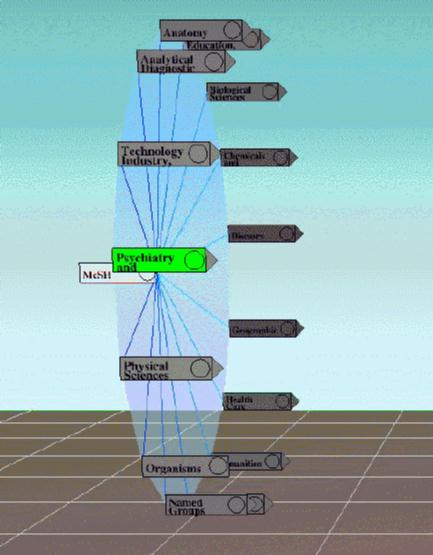
This is an unpublished Appendix for the paper:
which appears in the proceedings of 20th Annual International ACM/SIGIR Conference, Philadelphia, PA, July 1997. The paper is by the following authors:
Marti A. Hearst Chandu Karadi Xerox PARC School of Medicine, M121 3333 Coyote Hill Rd Stanford University Palo Alto, CA 94304 Stanford, CA 94305 hearst@parc.xerox.com
karadi@leland.stanford.edu
The purpose of this appendix is to supply more figures than could fit in the paper version of the proceedings. Please see the text for more explanations about the figures. Clicking on a figure brings up a new page containing a larger version of that figure.
Search interfaces must provide users with good ways to get started. In terms of an overview, an empty screen does not provide a good starting point, but the contents of a large hierarchy can be overwhelming, even if it can be made to fit in one window. The model of interaction used in Cat-a-Cone allows for several different starting points and interaction sequences.
One starting point shows all of the top level categories initially, and allows the user to control the subsequent expansions (see Figures A1(a)-(b)). The user can select one label to expand in detail, seeing all of its descendants (rather than having to navigate laboriously through many pages to see all of the subtrees). If this is still too overwhelming, the user can select a few nodes and issue the command ``prune others'' to allow look at a smaller space. Or if studies reveal a depth of expansion level that is most comfortable for a given category set, the subtrees could be programmed to automatically expand to this level. The context of earlier browsing activity can be retained or removed.

Figure A1(a): The top-level representation of the MeSH hierarchy as a search starting point.
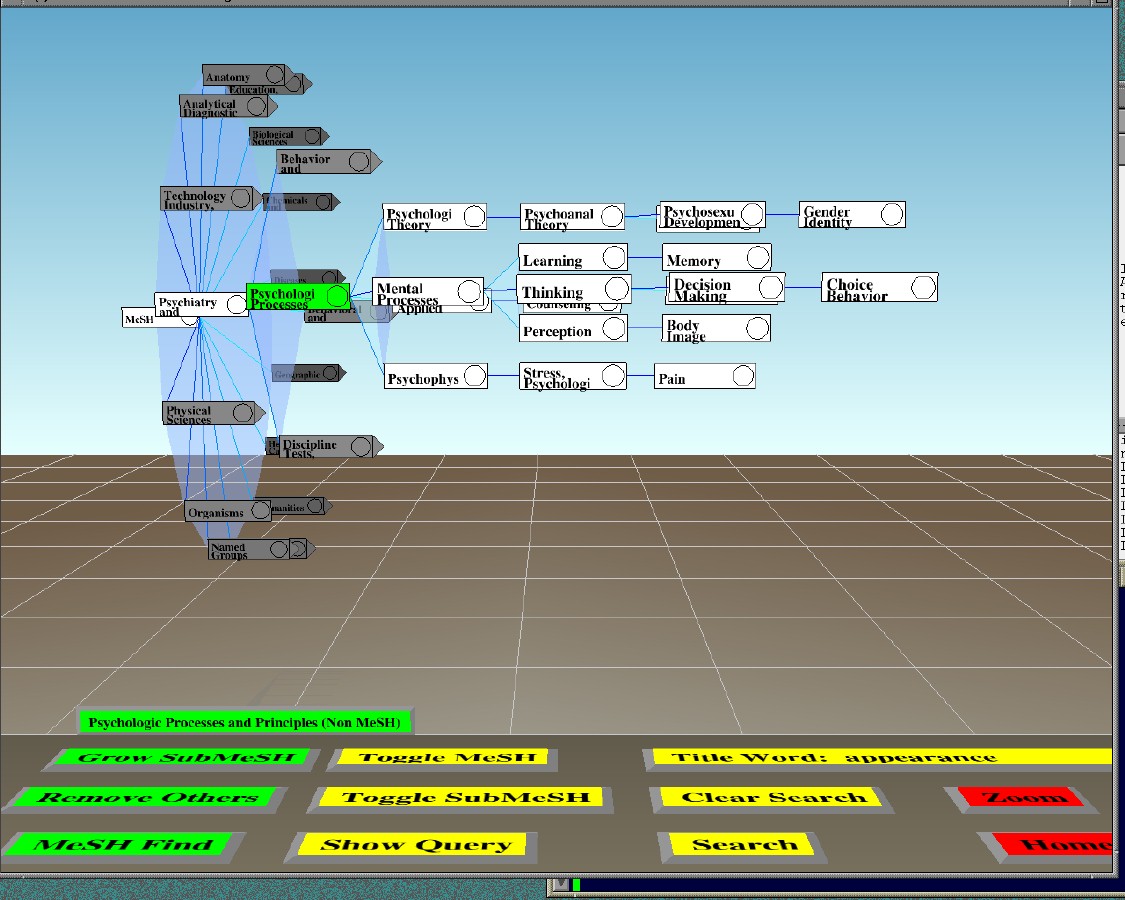
Figure A1(b): The expansion of the Psychiatry subtree.
Alternatively, the user can type in a category label and see which parts of the hierarchy match or partially match that term. The user can then expand and explore other nearby regions. Figure A2 shows the results of searching on ``Radi*'' over the MeSH terms in this subcollection. The word appears under four main headings ( Physical Sciences, Diseases, Diagnostics, Biological Sciences). The hierarchy immediately shows why ``Radi*'' appears under Diseases -- as part of a subtree on occupational hazards.
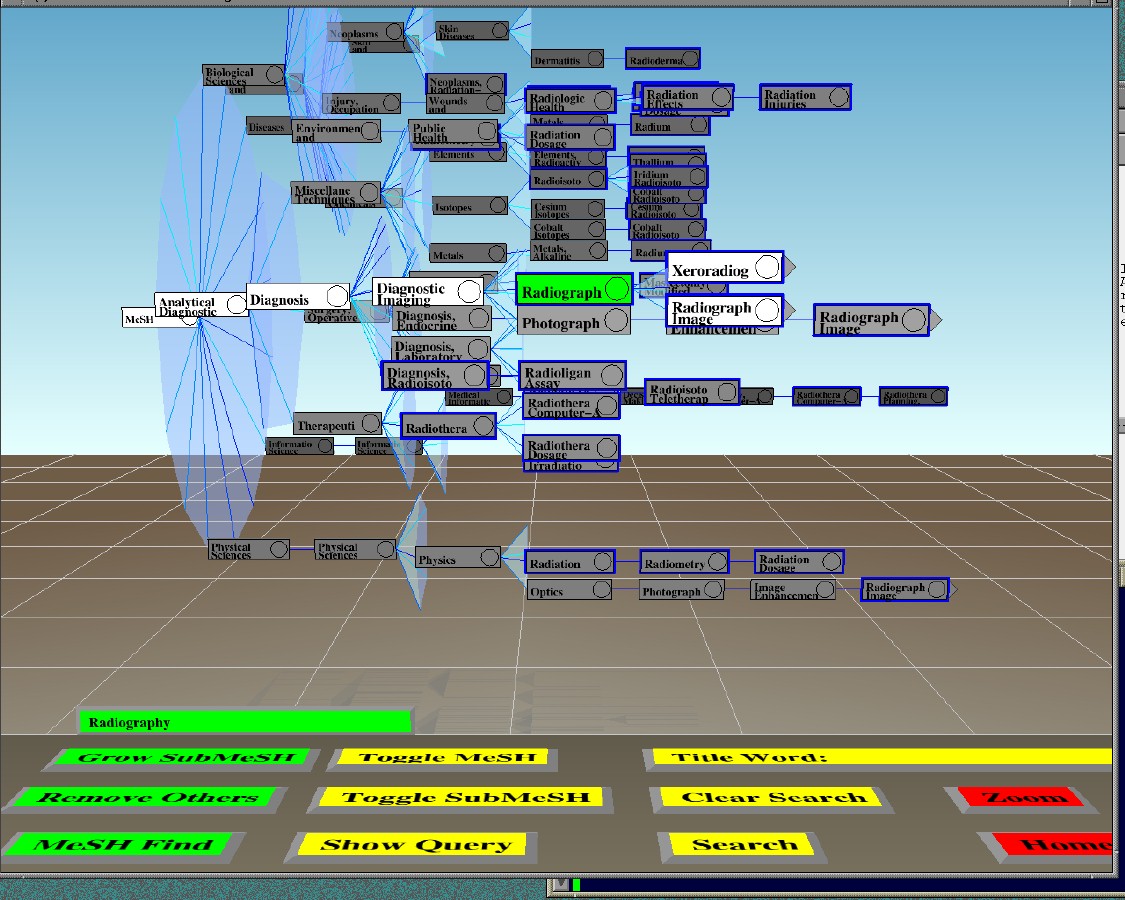
Figure A2: The results of a search over MeSH labels on ``radi*''. In this subcollection the term occurs under four main headings. Partial matches are shown.
Figure A3 shows similar information when requested of Internet Grateful Med. First a long list of choices is shown (longer than ours since related terms are also included). To see more information about a given label, the user selects the link (Radiation Injuries). The current context is lost, and a new web page appears showing the direct ancestors of the term and its immediate descendants. If the user attempts to see the siblings of the parent term (Wounds and Injuries) then the context is changed again. Now Radiation Injuries appears as one of many siblings and the context of its children is lost. To go back to the previous list of choices, this page is obliterated. The use of the ConeTree avoids this loss of context.
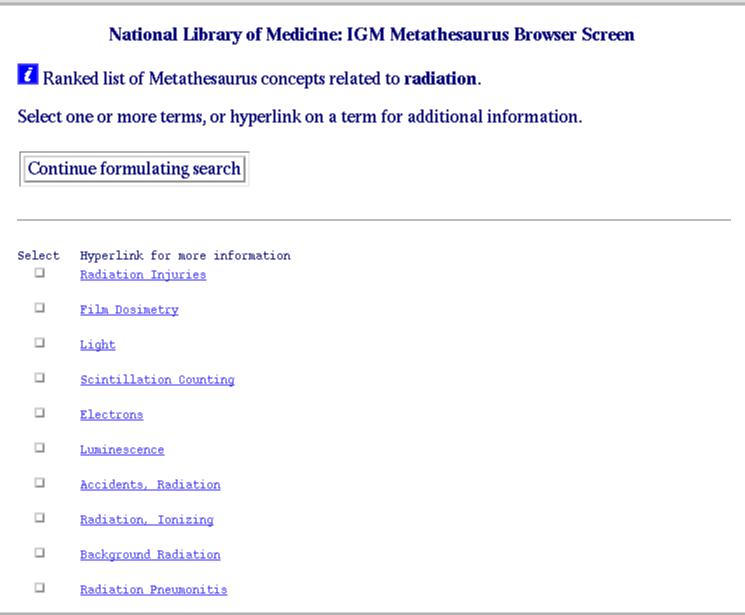
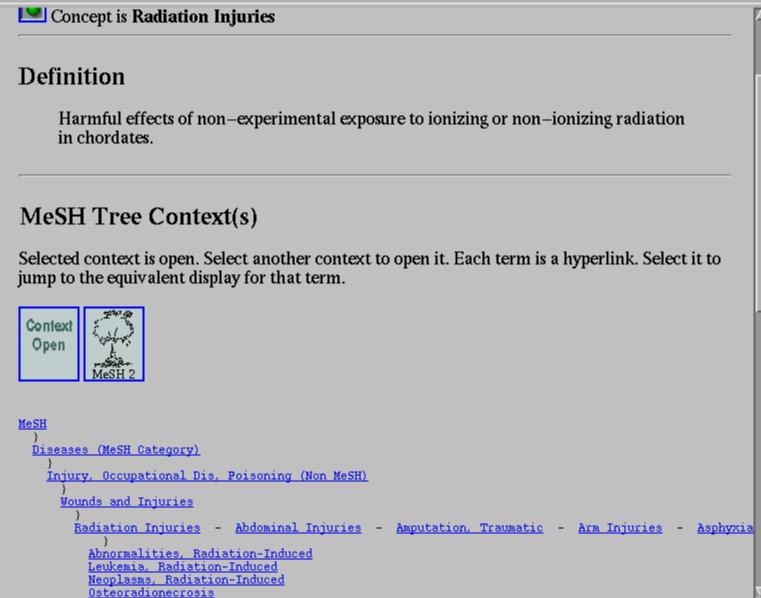
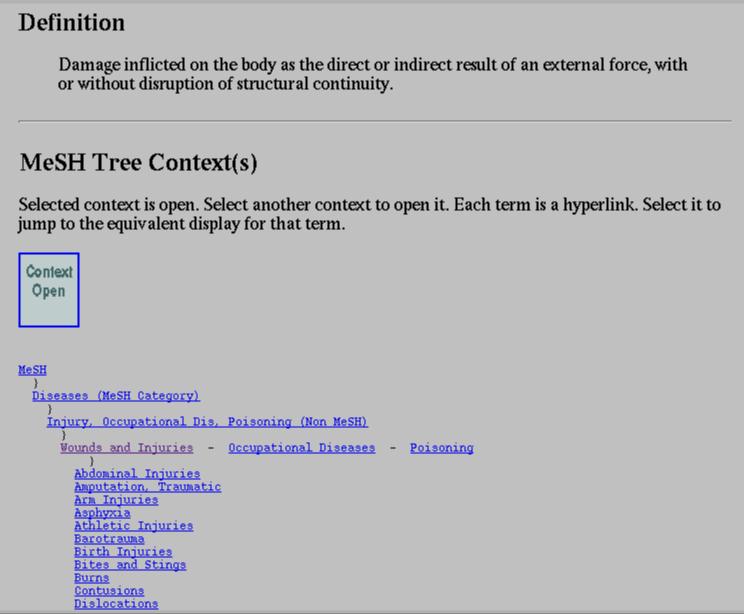
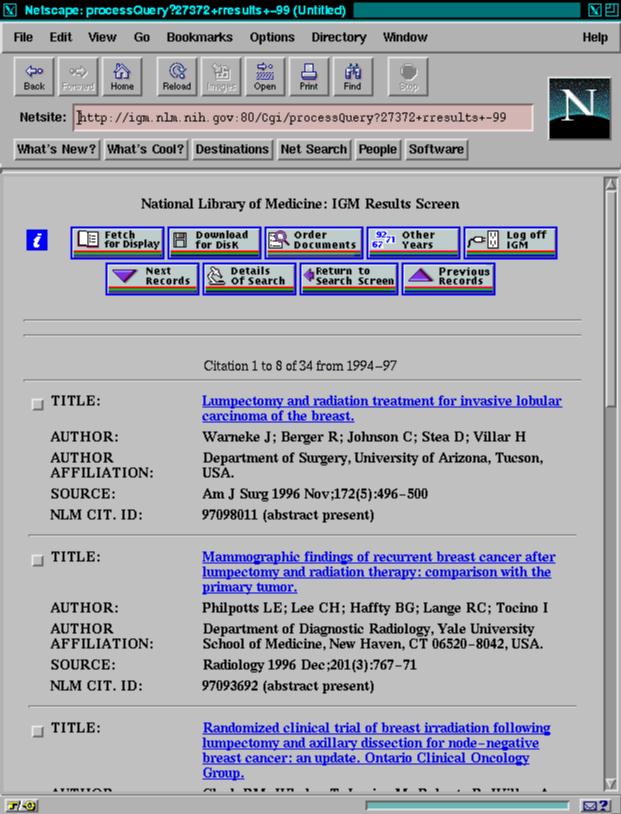
Figure A3 (a-d): The results of a viewing category labels in Internet Grateful Med, which is subject to the limitations of html. (a) Terms related to ``Radiation''. (b) Expansion of the category Radiation Injuries. (c) Expansion of its parent, Wounds and Injuries . (d) An example of search results on the title word ``lumpectomy''. Screenshots reproduced by permission of Anna Harbourt of NIH.
After a search on the category Mastectomy the user discovers an article that has a link to Survival Analysis (Figure A4). The user might not have been aware that this set of category labels existed, and can decide to delve more deeply into this topic, yielding the book of Figure 1 .

Figure A4: After retrieving documents containing the MeSH category label Mastectomy, discovering categories about studies of survival tradeoffs.